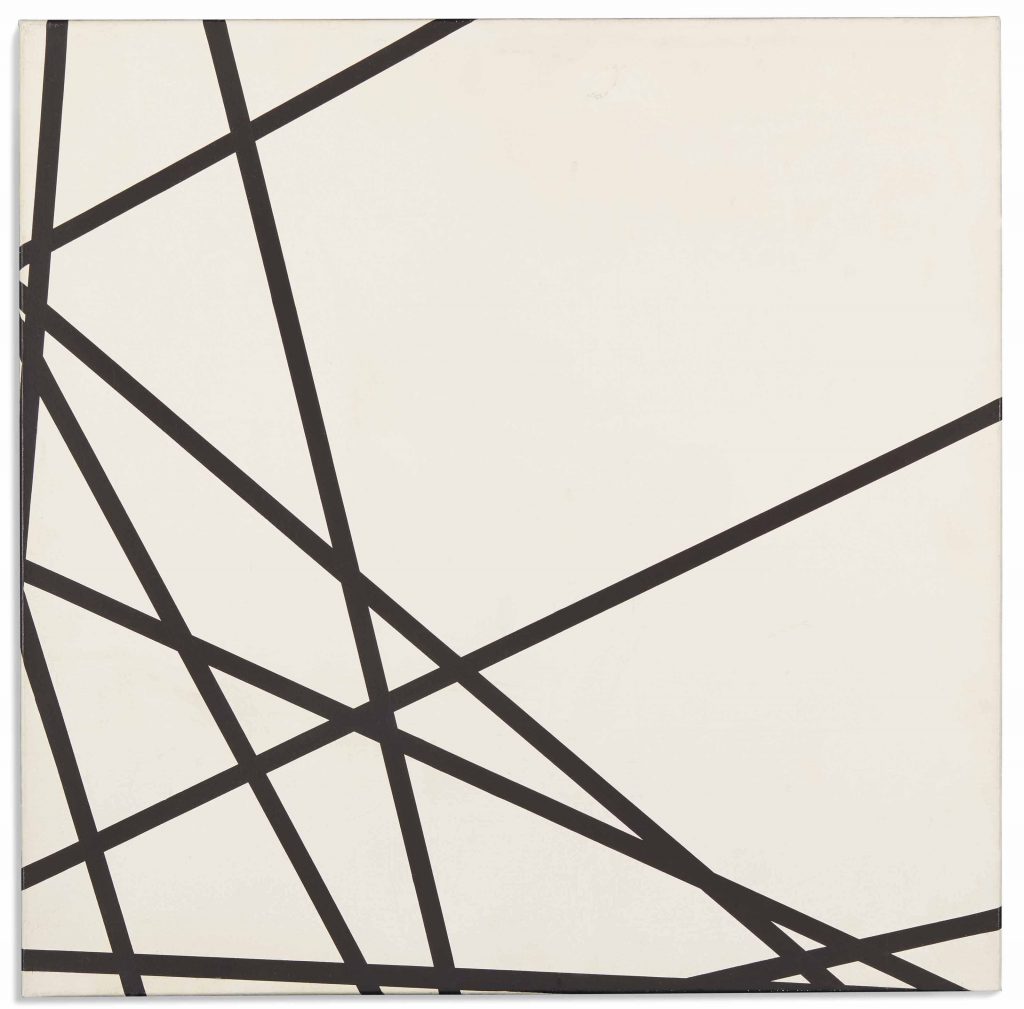The rigorous joker
10.22.2018
François Morellet (1926-2016) - 10 lignes au hasard (1975) (© ADAGP François Morellet Courtesy the artist and kamel mennour, Paris)
The lines of the art of chance pass through the work of François Morellet (1926-2016). For more than sixty years, this visual artist produced creations that he took great care never to create completely alone. Alone or in a collective, throughout the process he was always affiliated with the partnership of chance.
20th century art, taken in its avant-garde competition, wrapped up in the progress of sciences and technologies from the previous century, is not without a reflection about him. François Morellet, following on from Pietr Mondrian with whom he aligned himself, with the drive of his friend Pierre Dmitrienko, worked in and through abstraction to escape romanticism, lyricism, sentimentalism and naturalism and to remove the mystique surrounding the individual genius of the artist. Profoundly modernist, he implemented processes to depersonalise the creative activity. He then sought to “rationalise the artistic gesture, the starting point for reforming the conceptions of art” and contravene the sanctification of art. Disagreeing with art for art’s sake, Morellet expresses however, that a work of art only refers to itself.
To him, the geometry, the repetition, the random creative processes were ways of overcoming concern for style and identification with the artist as a person. A sort of empowerment of the art, the technical science of the aesthetic production is always in play in his work. For the artist, this means putting an end to the artist’s ego: “For around twenty years, I produced, with great obstinacy, systematic works whose constant line of conduct was to reduce my arbitrary decisions to a minimum. To limit my “artistic” sensibility, I eliminated composition, abandoned all concerns as regards execution and rigorously applied simple, clear systems that could develop either through genuine chance or the viewer’s participation.” (F. Morellet)
Dada and surrealism had already asserted the use of chance. Morellet, a mind described as rigorous and mischievous, delighted in inventing fanciful rules, not without overturning them freely to his own fancy. One art critic referred to the search for an “active neutrality” where the artist builds on elementary geometric shapes that he subjects to the principles of propagation (frame, grid, superposition, variation, juxtaposition, fragmentation, integration) by resorting to contrasting growth factors, from mathematical progression to word games (puns, palindromes, etc.) including the analytical deconstruction of the concepts of the history of art. In this programme, chance is a protagonist of creation, just like the support materials (square canvasses, adhesive ribbon, fluorescent lights, natural elements, screens and mosaics of pixels), the audience, and the space surrounding the work, the architecture and landscape into which it is set.
The titles of some works credit Morellet’s random partner (hasard/aleatoire in French): “10 lignes au hasard”, “Systèmes, hasard et téléphone”, “6 répartitions aléatoires de 4 carrés noirs et blancs d’après les chiffres pairs et impairs du nombre Pi”, “Répartition aléatoire de 40 000 carrés suivant les chiffres pairs et impairs d’un annuaire de téléphone, 50% bleu, 50% rouge” …
François Morellet was captivated by the zelliges at the Alhambra in Grenada which he visited in 1952, he found this art of motifs “the most intelligent, most precise, most refined, most systematic that has ever existed”. He was also fascinated by the openwork marbles of the tomb in Fatehpur Sikri (India), the Byzantine mosaics of Xanthos (Turkey), the pavements of the Mixtec temple in Mitla (Mexico) and those of the cathedral in Amiens. His work transposed into modern art this logical proposition of an aesthetic form which grows through internal programming. And his programmes extending a form in the space have summoned creative chance, as an agent that is both dynamic and entertaining.

